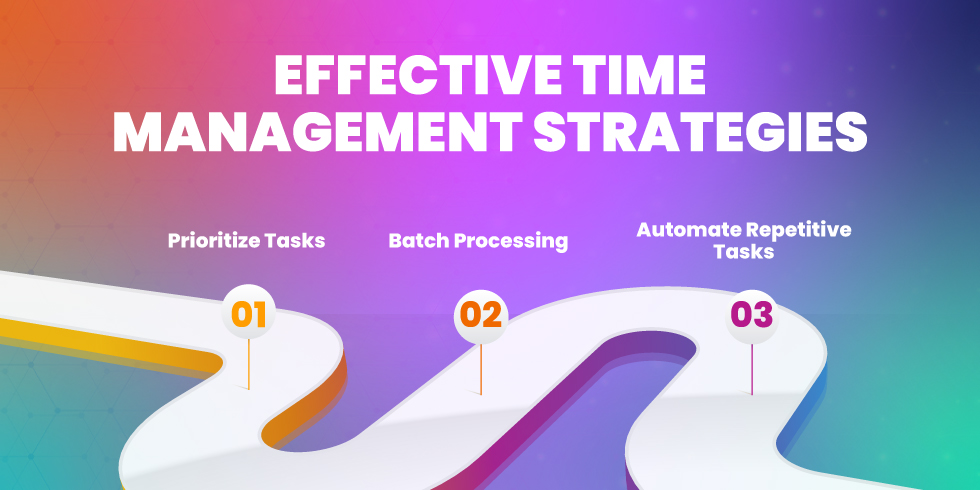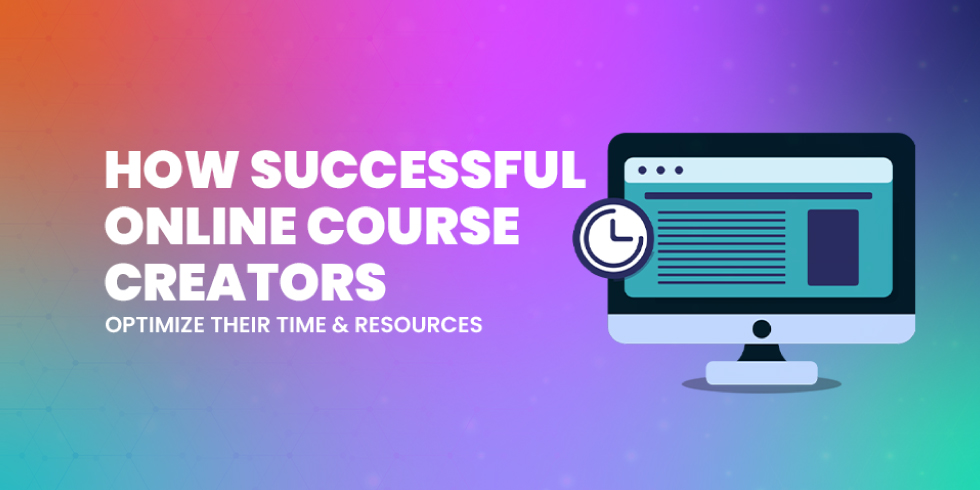In the competitive realm of online education, the efficiency with which course creators manage their time and resources significantly impacts their success and scalability. Effective time management and resource allocation are crucial for maintaining quality, meeting learner expectations, and achieving business objectives.
This article explores key strategies used by successful online course creators to optimize these critical aspects of course creation and delivery. You’ll also learn how CourseAI offers an AI Course Creator platform that takes out the grunt work that stands between you and success. Plus, we’ve thrown in a FAQ if you’re short on time but need answers ASAP. Let’s begin!
Understanding the Challenges
AI course creators operate in a dynamic and fast-paced field, necessitating constant updates to course content to reflect the latest developments in technology and methods. This requires not only a deep understanding of AI advancements but also a significant investment of both time and resources to integrate these updates effectively.
Beyond the content creation, course creators must manage a wide range of administrative duties. These include:
- addressing student inquiries, which may involve technical support or course guidance;
- handling marketing efforts to attract and retain students; and
- managing the distribution of course materials, which can include ensuring accessibility across various platforms and maintaining updates.
All these tasks create a complex ecosystem of responsibilities that can be challenging to manage efficiently.
Here’s a table summarizing these challenges:
| Challenge Area | Description | Impact on Creators |
|---|---|---|
| Content Updates | Constant need to update course materials to include the latest AI advancements. | Requires ongoing learning and integration, consuming significant time. |
| Student Inquiries | Managing a range of student communications from course feedback to technical issues. | Demands time and resources for effective communication and problem-solving. |
| Marketing | Developing and executing strategies to attract and retain students. | Requires strategic and creative input, often needing dedicated efforts. |
| Content Distribution | Ensuring that course materials are accessible and up-to-date across various platforms. | Involves logistical planning and continuous oversight of content channels. |
Effective Time Management Strategies

Prioritize Tasks
Understanding and prioritizing tasks is essential for effective time management. Course creators should focus on activities that offer the highest value to their learners and their business. This might mean prioritizing content creation over less critical tasks or delegating administrative duties.
Click here to learn more about Priotizing Tasks with CourseAI
Batch Processing
Batch processing involves grouping similar tasks and completing them in a designated block of time. This method reduces the time lost to task-switching and can increase productivity.
Automate Repetitive Tasks
Automation is a powerful tool for saving time, particularly for tasks that are repetitive and do not require direct human intervention.
Click here to learn more about Automating Repetitive Tasks with CourseAI
Resource Allocation Strategies
Invest in Quality Tools
Investing in the right tools can enhance the quality and efficiency of course creation and delivery. High-quality video production tools, LMS software, and collaboration tools are essential investments for any AI course creator.
Outsource Non-Core Activities
Outsourcing tasks that are outside the core competencies of the course creator can optimize resource use and focus.
Here’s a list of seven (7) activities that online course creators might consider outsourcing to optimize their resource use and focus:
- Graphic Design: Hiring a professional to handle visual elements like course graphics, thumbnails, and promotional materials.
- Website Maintenance: Contracting a web developer to ensure the course website is functional, up-to-date, and secure.
- Content Research: Employing a research assistant to gather the latest data and studies relevant to course topics.
- Video Editing: Outsourcing video production and editing to create polished, professional-looking course videos.
- Social Media Management: Using a social media manager to handle regular posting, engagement, and marketing campaigns.
- Customer Support: Utilizing a customer service team to manage student inquiries and issues promptly.
- Technical Support: Engaging technical experts to handle backend issues, software updates, and troubleshooting for smooth course delivery.
Optimize Your Course Creation with CourseAI!
At CourseAI, we understand that your focus should be on delivering excellent educational content. That’s why we’ve built partnerships and integrated services to handle every aspect of course delivery and maintenance, so you don’t have to.
| Service | Description |
|---|---|
| Graphic Design | Let our team of expert graphic designers bring your course visuals to life, enhancing student engagement. |
| Website Maintenance | With our dedicated web maintenance services, your course platform will always be smooth, secure, and up-to-date. |
| Content Research | Access our network of content researchers who can provide the latest and most relevant data for your courses. |
| Video Editing | Utilize our professional video editing services to produce high-quality videos that captivate and educate. |
| Social Media Management | Leverage our social media experts to boost your course’s online presence and attract more learners. |
| Customer Support | Depend on our responsive customer support team to handle all student inquiries and ensure a seamless learning experience. |
| Technical Support | Our technical support staff are on call to resolve any issues quickly, keeping your course running smoothly at all times. |
Visit courseai.com today to learn how you can free yourself from the backend tasks and focus on what you do best—creating inspiring and impactful courses!
Leverage Community Support
Building a community around your courses can provide a valuable resource in terms of feedback, content ideas, and even peer-to-peer support among learners.
Monitoring and Adjusting Strategies
To maintain and improve the effectiveness of time management and resource allocation in educational settings or projects, it’s crucial to implement a cycle of continuous monitoring and adjustment based on outcomes and feedback. This process involves regular reviews and feedback mechanisms to ensure that strategies remain aligned with goals and adapt to changing needs.
Regular Reviews
Conducting regular reviews of strategies is essential for understanding their efficiency and effectiveness. These reviews can be structured around several key components:
- Time Tracking: Assess how much time is spent on various tasks and projects.
- Outcome Analysis: Evaluate the results or outcomes produced by these tasks.
- Strategy Adjustment: Make necessary adjustments to strategies based on their performance.
Typical Example of a Review Process:
| Step | Description |
|---|---|
| Set Review Intervals | Decide on a frequency for reviews (e.g., weekly, monthly). |
| Collect Data | Gather data on time spent and outcomes achieved. |
| Analyze Data | Look for patterns or areas for improvement. |
| Implement Changes | Apply changes based on analysis to optimize efficiency and effectiveness. |
Feedback Mechanisms
Feedback from students and peers is invaluable for refining time management and resource allocation strategies. Effective feedback mechanisms help identify areas needing improvement and validate the success of current strategies.
Types of Feedback Mechanisms:
- Surveys: Distribute surveys to collect quantitative and qualitative data on experiences and satisfaction.
- Focus Groups: Conduct discussions with select groups to dive deeper into specific issues or feedback.
- One-on-One Interviews: Engage directly with individuals for detailed feedback.
- Suggestion Boxes: Allow anonymous feedback on any area, providing insights that might not surface in more formal settings.
Implementing Changes Based on Feedback
Once feedback is gathered, it’s crucial to analyze and act on it effectively:
- Identify Themes: Look for common themes or repeated issues in feedback.
- Prioritize Actions: Decide which changes to implement based on impact and feasibility.
- Communicate Changes: Inform stakeholders about the changes and the reasons behind them to maintain transparency and buy-in.
- Measure Impact: After implementing changes, measure their impact to see if further adjustments are needed.
Conclusion

Optimizing time and resources is crucial for the success of online course creators, especially in fields as dynamic as AI. By prioritizing tasks, batching work, automating repetitive processes, investing in the right tools, and outsourcing effectively, AI course creators can enhance their productivity and focus on delivering high-quality educational content.
Try CourseAI today!
FAQ: Optimizing Time and Resources for Online Course Creators
1) What are the main challenges faced by AI course creators?
AI course creators need to continuously update content and manage administrative tasks due to rapidly evolving technologies.
2) What are some effective time management strategies for course creators?
Prioritize high-value tasks, batch similar tasks, and automate repetitive processes.
3) How can course creators effectively allocate their resources?
Invest in quality tools, outsource non-core activities, and engage with a community for support.
4) How should course creators monitor and adjust their strategies?
They should conduct regular reviews to track time and evaluate outcomes, and use feedback mechanisms like surveys and focus groups.
5) How do course creators implement changes based on feedback?
Identify key themes in feedback, prioritize actionable changes, and communicate these effectively while measuring their impact.
6) How does CourseAI help optimize the process for course creators?
CourseAI automates many tasks with its AI platform, enabling creators to focus on producing high-quality content and efficiently scale their courses.

